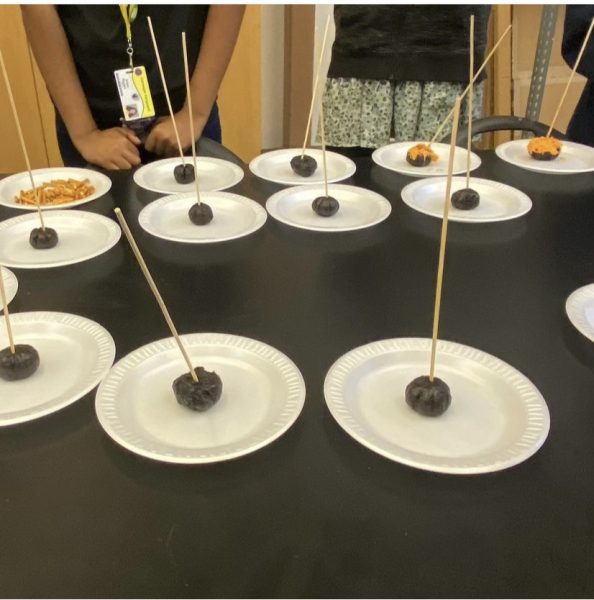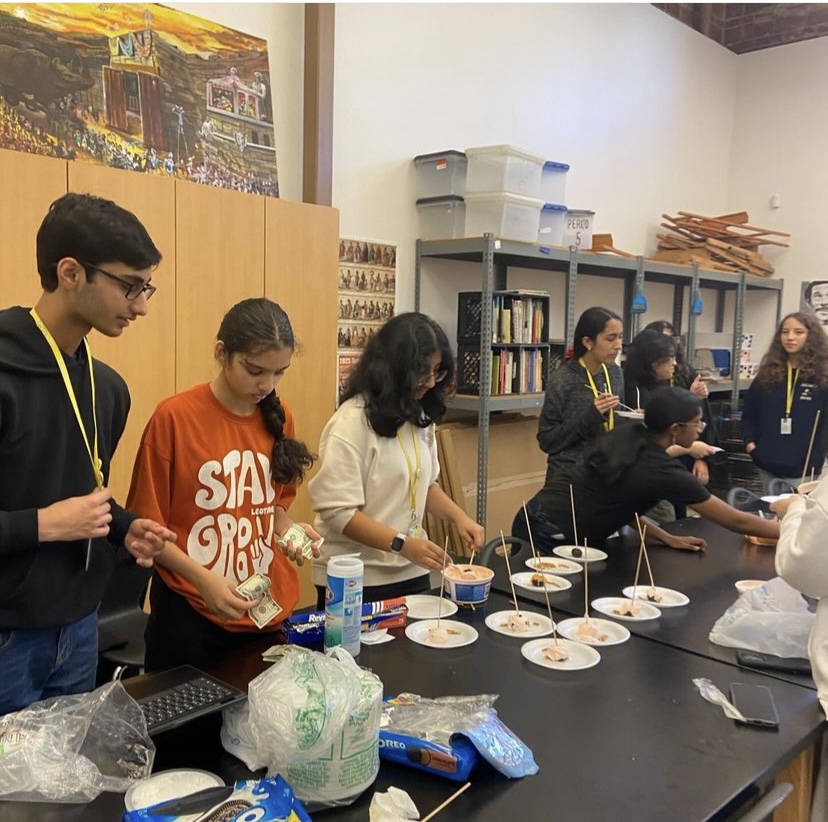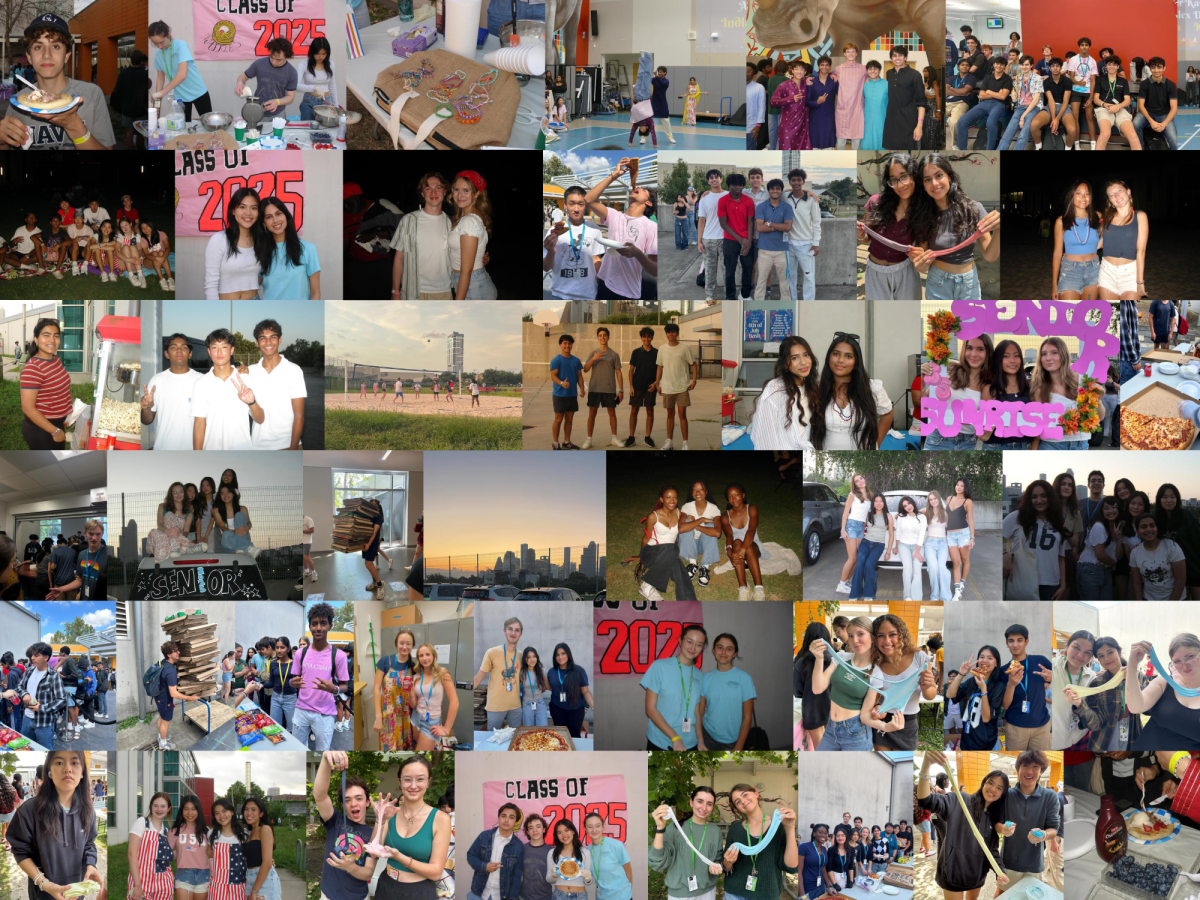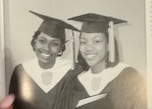A rather large group of sophomores huddles together at the front of the art classroom with the projector screen on. On nearby tables, a large assortment of different ingredients and supplies, such as pretzel sticks, packs of Oreos, and paper plates, is lined up. As the meeting starts, club members gather around the tables and start to make the recipe of the day.
It is known by many at CVHS that students participate in a wide range of groups, from cultural clubs to sports. However, this is the first year of the Food Club. With a staggering 21 listed cabinet members, this culinary group has already started to make its mark on CVHS.
“My personal vision [for Food Club] is that we will grow our territory … and spread the knowledge of making food to everyone,” says Shritha Mandula, the president of the club. In the past, CVHS has had a few clubs that focused on food, but usually a specific type of food. However, Food Club focuses on different foods. “Since our cabinet is diverse, too, we can find a whole bunch of new foods and make things that are unique,” Mandula says.
The Food Club reflects the diversity of CVHS’s students. Vice President Looluwa Pitolwala expands on this, saying that the Food Club focuses on “learning about foods from different cultures” and “because Carnegie’s a very diverse school,” the club can learn about and try to incorporate foods from many “different places” into the club’s activities.
The structure of Food Club meetings differs slightly from that of other CVHS clubs in the sense that they are fairly informal and flexible in terms of how activities run. “They’re not very structured, but in a good way. It’s kind of fun to be there and figure things out as we go. I would say that it’s kind of unique, because instead of making the food at home, everyone’s actively participating when they’re in the line [to prepare their own food],” Mandula says.
According to Mandula, the club meets biweekly. One meeting involves the club members choosing through a vote which of the recipes presented by the cabinet they would like to make, while the next is focused on creating the recipe. Mandula says that “our food recipe managers both come up with two recipes that we think would be reasonable to do at school and that would fit within our budget. And then during our meetings, we hold a poll to see which one the [club members] prefer.”
The club has to choose recipes that can be made within the school’s constraints, such as fire safety protocols and the lack of available refrigerators and freezers. As a workaround, they try to focus on recipes that are easy to make and don’t require much equipment, such as dirt pudding and pumpkin Oreo balls.

“We have a document that has just recipe ideas that are no-bake, easy to make, with not many ingredients,” said Mandula. “If we need to pick some recipes, we can use that document to pick from.”
The recipe managers handle many of the documents and other technological aspects of the club. “As a recipe manager, I personally make a lot of the slideshows,” says Iniya Rajan. These slideshows are used during the meetings to maintain structure and are a key part of the club’s efficiency by displaying images of the food and information about the recipe.
With inflation and the rise of grocery prices, the club must ensure that it stays within the budget while sourcing quality ingredients. “You have to talk with the treasurers and the food recipe managers, and you have to collaborate with the rest of the board on what resources you buy for the recipe,” says Lydia Luo, one member of the club’s Food Resource Board. “And most of our things, they’re coming from donations from our Food Resource Board. Some ingredients are bought and some are just donated by members,” she says.
Looking toward the future, the club has big plans for the rest of this school year and beyond. “We do have a couple [projects] we are sort of planning out right now,” says Mandula, including food-centered gatherings for other popular holidays, such as Valentine’s Day. They are also planning a “food distribution event to a food bank.” Additionally, they plan to have special club activities to honor different groups of people during the month that they are celebrated.
Pitolwala says, “We view food as a common unifier for all of us … Everyone’s taking different courses, everyone has different views for their future, but we’re all just coming together to make a quick snack. And I think that that’s one of our biggest strengths.”









